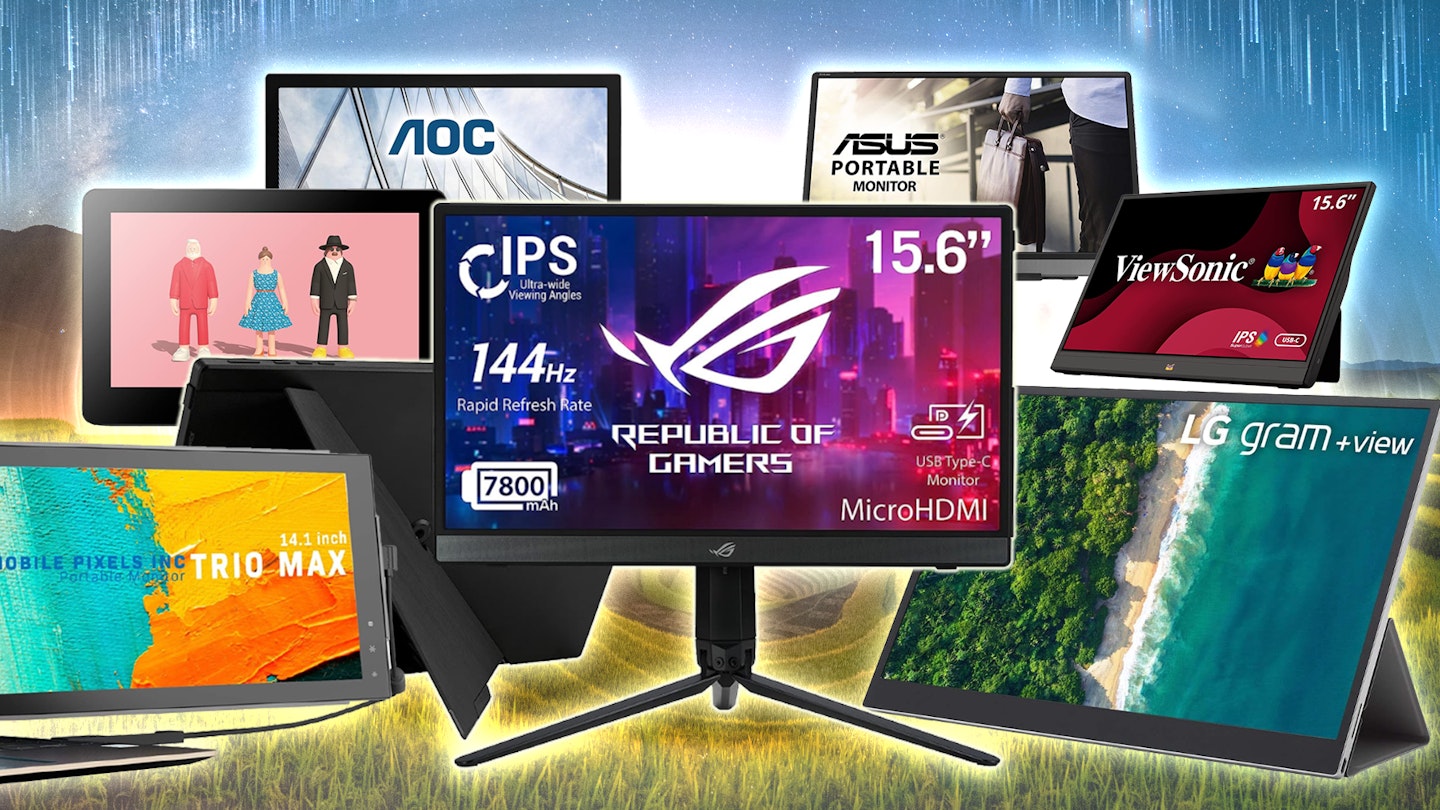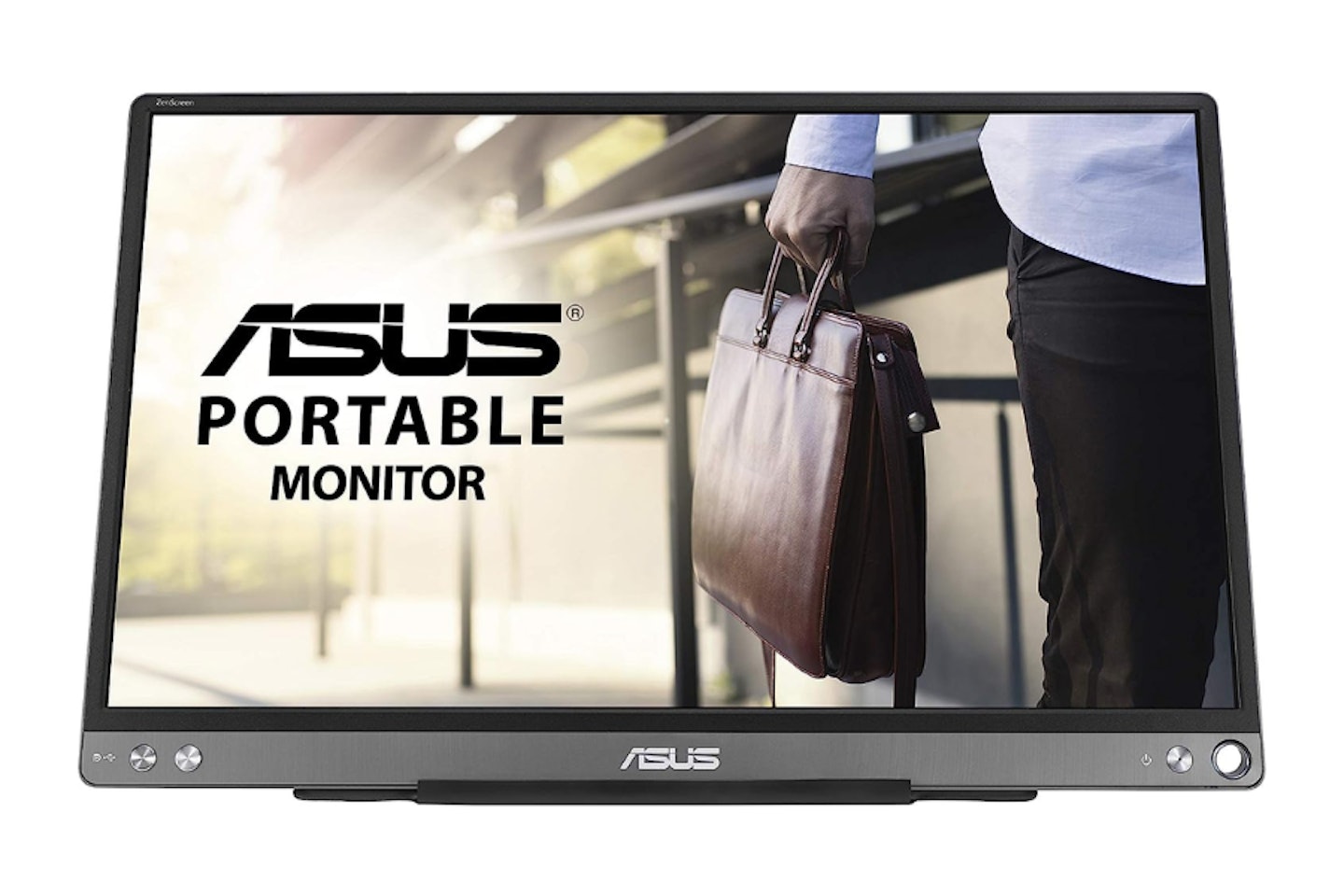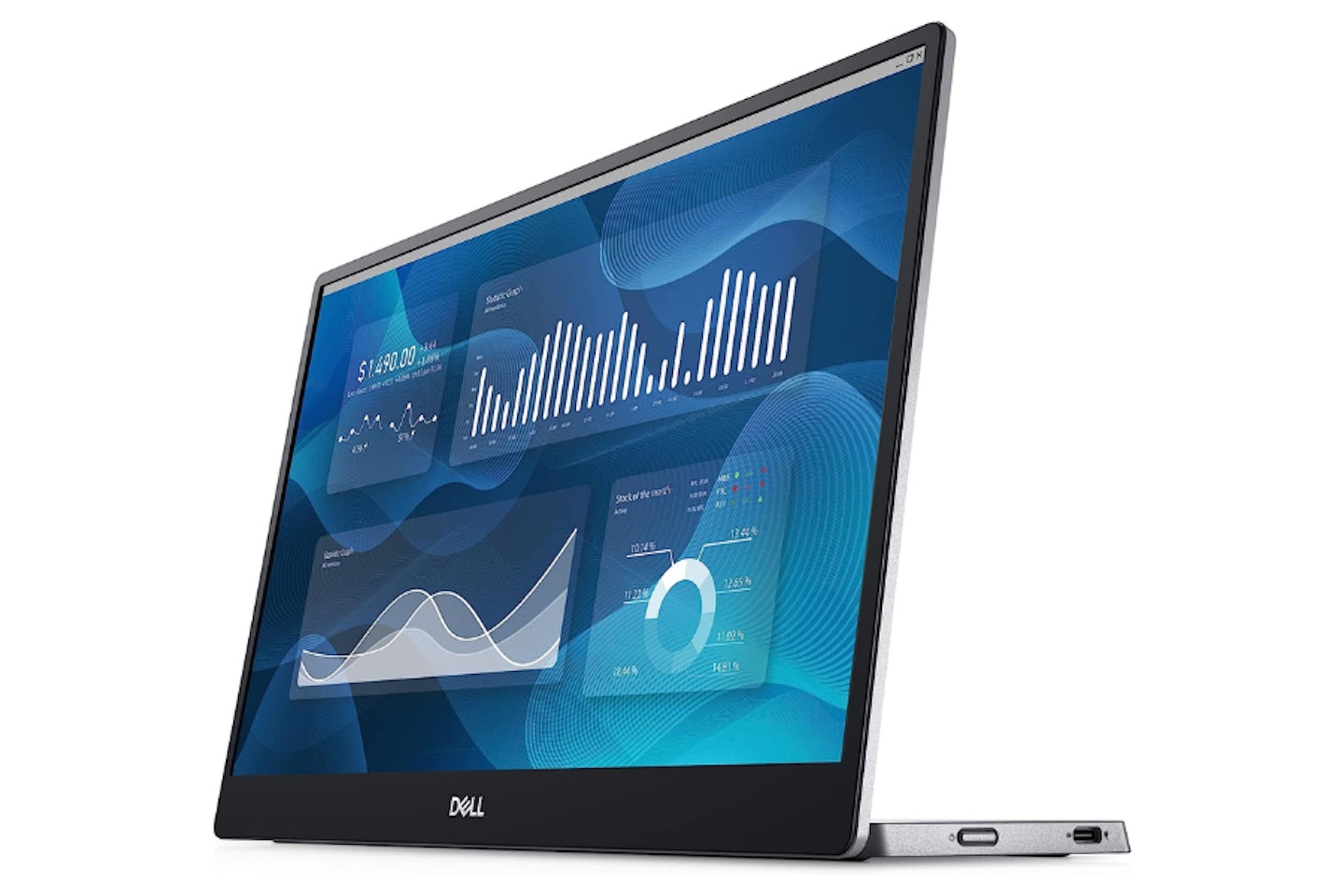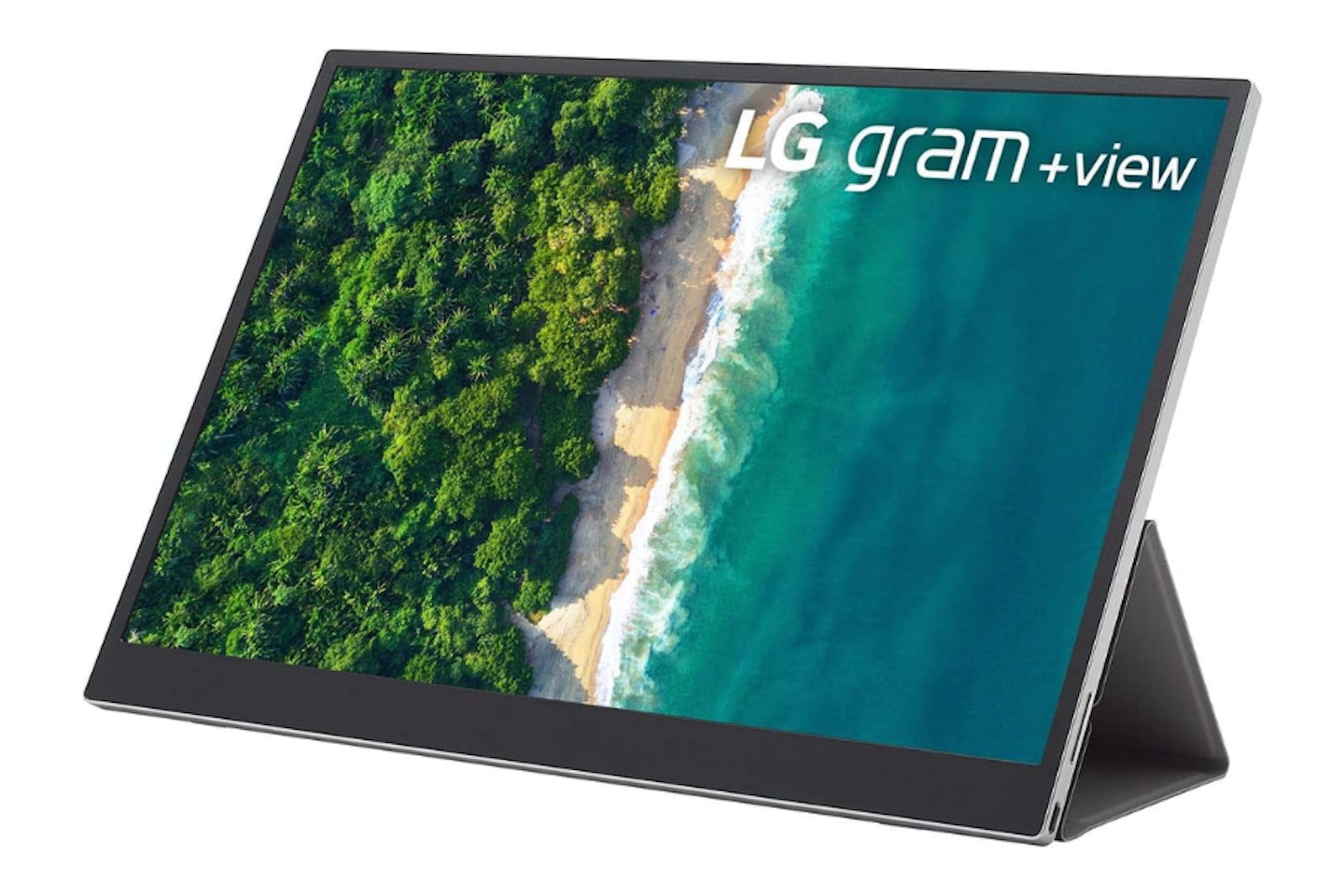The best portable monitors have finally come of age and are now a practical option for expanding your setup for work or games on the go. As with all modern tech, PC monitors have evolved to be thinner, lighter and more powerful. One key new development is USB-C connectivity. USB-C ports allow video, data and more power to be transferred within one cable. The benefit that this type of connection brings to some portable monitors is significant - you don’t need a power adaptor or even an HDMI cable.
And you won't need to worry about downgrading your resolution too much either. The minimum you can expect from any portable monitor is 1080p, or Full HD. You may struggle to find a portable replacement for your fully-specced 4K desktop monitor, but there will be a portable screen that comes close - suitable for schoolwork, business people, designers, or gamers.
Best portable monitors of 2024 at a glance
• Best overall portable monitor: ASUS ZenScreen MB16ACE Portable Monitor - View at Amazon
• Best budget portable monitor: AOC i1601FWUX Portable Monitor - View at Amazon
• Best portable monitor for gaming: ASUS ROG Strix XG16AHP - View at Amazon
• Best 4K portable monitor for designers: Wacom Cintiq Pro 16 - View at Amazon
But why even buy one of these, especially if your laptop is a 4K 18-inch beast? Well, not everyone is sporting a giant laptop, but even if they are, a portable screen is just as beneficial as having an extra ultrawide monitor on your desktop. Enhanced workflow, better productivity, more space and potentially a larger screen than your portable device too. Working or gaming when you're out and about will feel like a serious upgrade. But which size is best for you, and what features will you be needing the most?
Our monitor experts have selected the champions from the vast range of portable monitors, grouped into handy categories - including some for creative types who need their monitors for photo editing and more. Most of our recommendations are below 16 inches - large enough to be workable, but small enough to slide into a backpack. We've also included a buyer's guide and some answers to some of your frequent questions. So, pack up your laptops and let's venture out and find the best portable monitor for you.
Best portable monitors of 2024:
Best overall
Aesthetic and light, the ZenScreen monitor is a wonderful all-rounder at an attractive price. The screen quality and colour are impressive thanks to IPS technology, and the brightness is acceptable in indoor environments. Thanks to its slim 8mm thickness and mere 800g weight, it's the ideal travel monitor, and the 15.6-inch screen offers ample space. It features ASUS's Eye Care flicker-free and low blue light tech for comfortable use. For extra money, this monitor can be had with a battery pack that will give it a few hours of runtime, and for those wanting a touchscreen, the ZenScreen MB16AMT is a worthy option.
Pros
- Well-thought-out design
- Sturdy build
- Eye care features
- Good battery life
- USB-C for easy connectivity
Cons
- Only Full-HD
| Display: | 15.6” w/IPS |
| Resolution: | FHD 1920 x 1080 |
| Contrast Ratio: | 800:1 |
| Response Time: | 5ms |
| Refresh Rate: | 60Hz |
| Brightness: | 250 cd/m2 |
| Connectivity: | USB C or A |
| Weight: | 0.8kg |
| Dimensions: | 359.7 x 226.4 x 8.0mm |
Best budget
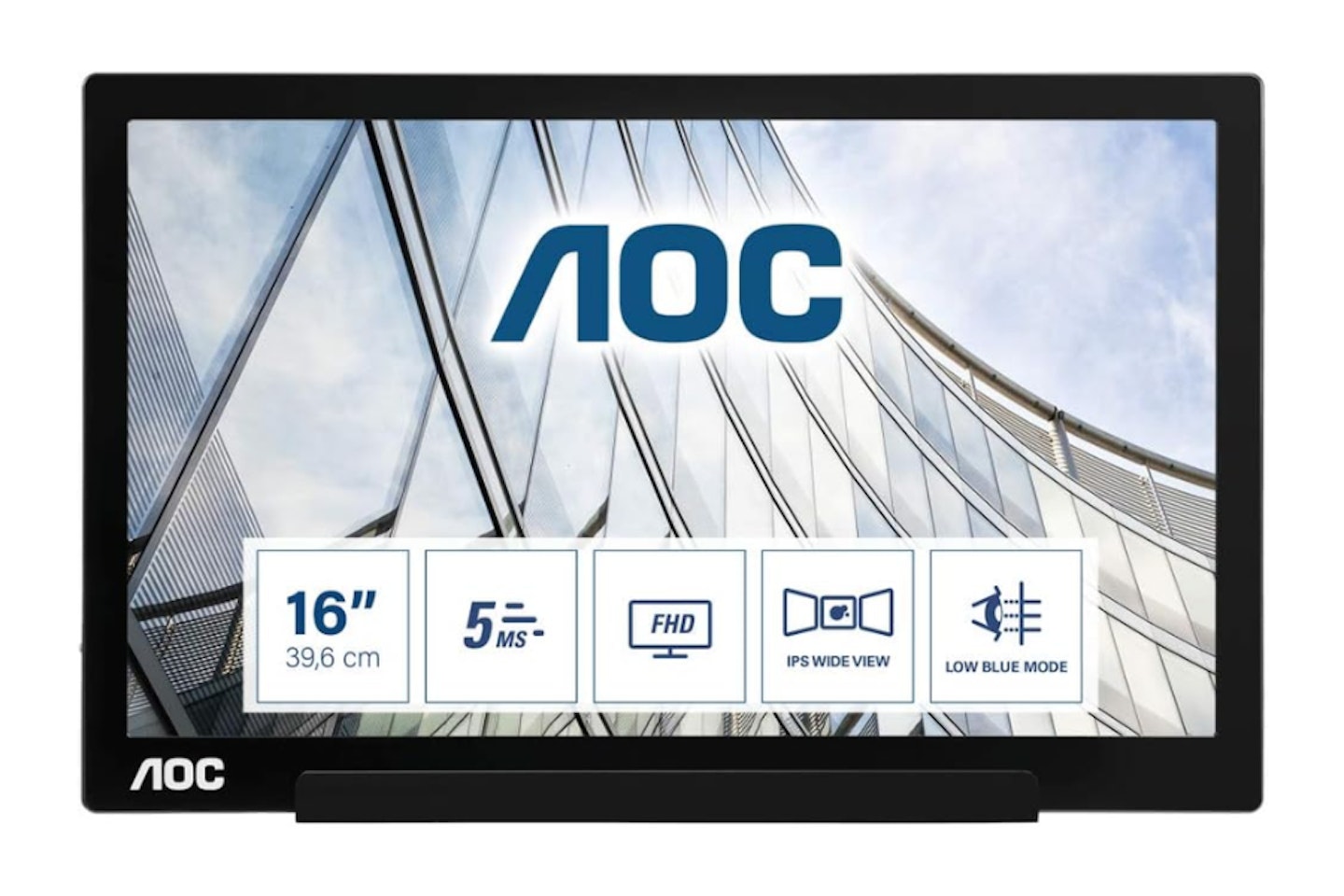
For those wondering if there is a portable monitor that doesn't stray over £200, this is what you've been waiting for. Yes, there are cheaper to be found, but this comes from a respected brand - AOC. It's almost as light as the ASUS screen and has the same Full HD 1080p screen resolution. The build is a little budget here and there, but not in ways that detract too much. Where the AOC lags behind a little is in contrast ratio so the image isn't quite as crisp, and bright. But in anything other than an outdoor environment, you shouldn't notice. The AOC isn't quite as modern-looking as some of its competitors, but that price tag is indeed very alluring.
Pros
- Budget price, without cutting too many corners
- USB-C connectivity
- Decent contrast levels
- Great practical cover and stand
Cons
- In the factory setting, colours are a little subdued
- Budget build
| Display size: | 15.6” w/IPS |
| Resolution: | FHD 1920 x 1080 |
| Contrast Ratio: | 800:1 |
| Response Time: | 5ms |
| Refresh Rate: | 60Hz |
| Brightness: | 220 cd/m2 |
| Connectivity: | USB C |
| Weight: | 0.82kg |
| Dimensions: | 376.2 x 235.2 x 8.5 mm |
The Mobile Pixels Duex Max DS is a 14.1-inch portable laptop monitor designed to boost productivity with its Full-HD resolution and compact size. The monitor attaches to your laptop using a magnetic system, providing extra screen space without creating too much bulk for your laptop bag.
The IPS panel delivers decent viewing angles and image quality, though we think the 300 nits brightness might not match high-end laptop displays. The setup can be a bit fiddly, but its lightweight and flexible design make it a great addition for on-the-go professionals. Overall, it's ideal for multitasking and those who need a secondary window for various apps. One excellent extra feature is that it can be detached and stand up in portrait mode for those who need to work on documents.
In our full review of the Mobile Pixels Duex Max DS monitor, Senior Tech Writer Chris Duffill said "I think this is priced correctly for a 1080p resolution monitor and it delivers just that – Full HD and no more. So, although you’re free to attach this to a 4K or Quad HD laptop, the resolution difference may be a bit jarring.
"For me, however, I found it complimented my 13.3-inch IPS laptop display that runs at the same resolution. If you think of it as a separate Full HD workspace that can contain its own application window, it becomes a highly useful piece of screen real estate."
Pros
- A fast and easy way to instantly add more workable space to any laptop
- Can be powered by a single USB-C cable from the laptop, as well as sending the video signal (for laptops with compatible USB-C ports)
- Lots of flexibility with the stand and mount, including portrait mode
Cons
- Setup and positioning can be a little fiddly
| Resolution | 1920 x 1080 pixels (Full HD) |
| Screen size | 14.1-inch |
| Screen type | IPS |
| Refresh rate | 60Hz |
| Response time | 2ms |
| HDR | No |
| Ports | USB-C, Mini HDMI |
| Colour support | Not specified |
| Brightness | 300 nits |
| Viewing angle | 178° horizontal / 178° vertical |
Best for home working
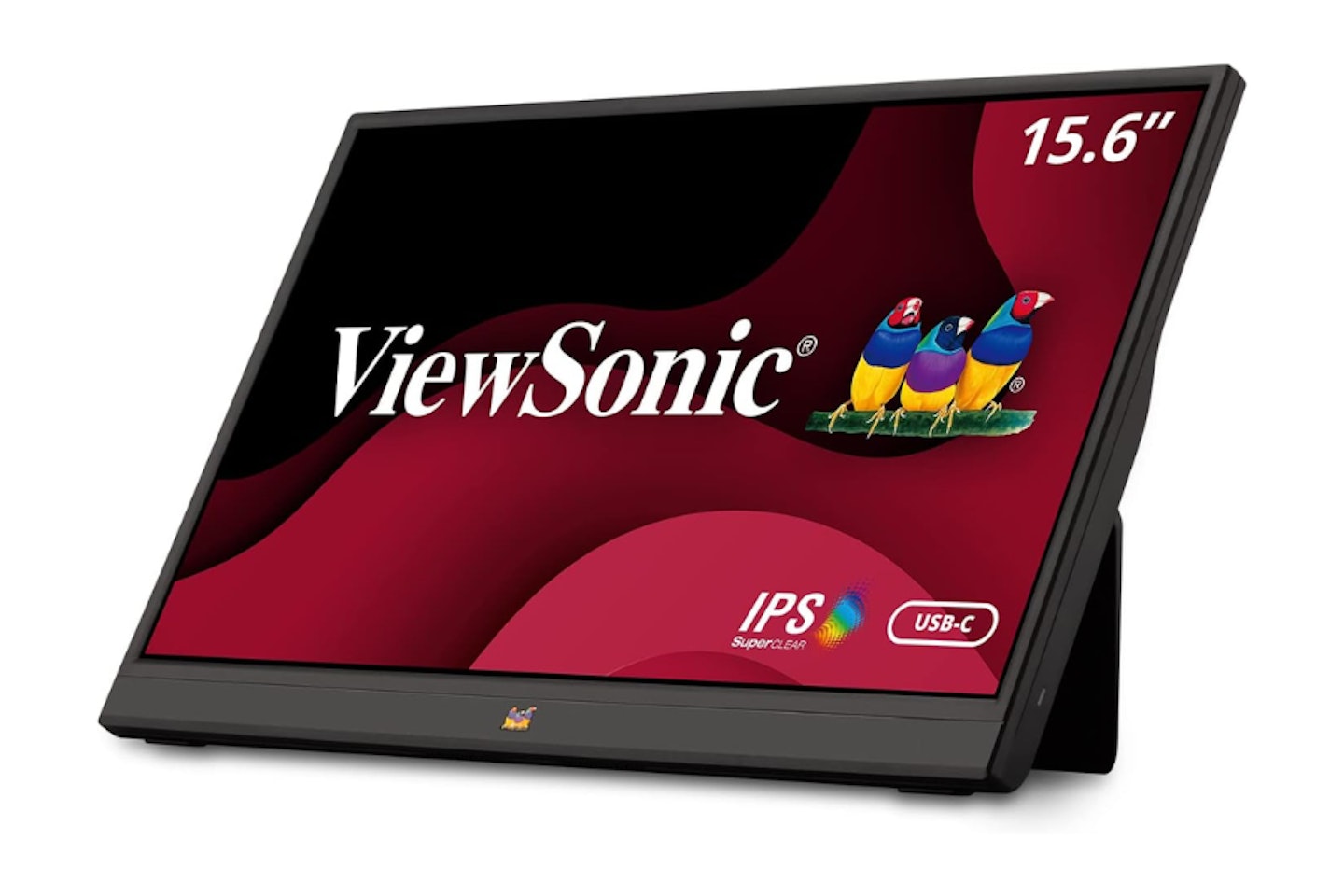
At a full 16 inches, the ViewSonic va1655 screen offers a generous screen size. It isn't quite as light as the ASUS, but light enough to be practical. With two USB C and a mini HDMI slot, plus a 3.5mm audio jack, the ViewSonic screen is super for versatility. It also has added benefit of having speakers (but these are nothing to shout about) and eye care technology for comfortable use.
And as we're talking comfort, if there's a chance you'll be spending long hours working on a portable monitor, you might want a foldable monitor stand to keep your posture healthy. And again, regarding general usability, this is not a touchscreen version (although, there is one). But, we think touchscreens are more cumbersome than useful in most cases when it comes to a portable screen. After all, that's what tablets are for - any serious work will probably be happening with a mouse or, at a push, a trackpad.
Pros
- Excellent size
- Plenty of modern connections
- Headphone jack
- Eye care technology
Cons
- A little weighty
- Speakers are a bit lightweight
| Display: | 16” w/IPS |
| Resolution: | FHD 1920 x 1080 |
| Contrast Ratio: | 800:1 |
| Response Time: | 6.5ms |
| Refresh Rate: | 60Hz |
| Brightness: | 250 cd/m2 |
| Connectivity: | USB C, mini HDMI, 3.5mm audio out |
| Weight: | 1.0kg |
| Dimensions: | 355.0 x 223.0 x 16.0mm |
Best vertical dual
 Laptops Direct
Laptops Directwww.laptopsdirect.co.uk
The Mobile Pixels Geminos T Dual 24" FHD monitor revolutionizes workspace efficiency with its dual vertical screens, offering a seamless, clutter-free experience for professionals. Its touchscreen feature, ergonomic design for adjustable viewing angles, and ultra-thin bezels enhance productivity and creativity. Integrated with a webcam, speakers, and microphone, this monitor provides a comprehensive solution for any desktop setup, supported by a USB Type-C 10-in-1 multiport dock for expanded connectivity. Ideal for stock traders, editors, coders, and entrepreneurs seeking a smoother workflow. Just note, you could take this with you, but it's heavy and won't fit into a laptop bag. But, if you need two extra monitors but don't want the hassle of loading two screens into your car, this is it.
Pros
- Dual vertical screens enhance multitasking and productivity
- Ergonomic design allows for adjustable viewing angles
- USB Type-C 10-in-1 multiport dock expands connectivity options
Cons
- Portability might be limited due to the weight and dual-screen setup
| Display size: | Dual 24" FHD monitors |
| Resolution: | 1920x1080 resolution |
| Contrast Ratio: | 1000:1 contrast ratio |
| Response Time: | Unknown |
| Refresh Rate: | 60Hz |
| Brightness: | 250cd/m² brightness |
| Weight: | 9.07kg |
| Dimensions: | 55.98 cm x 49.99 cm x 11.00 cm |
Best for gaming
 Amazon
AmazonOf our picks, this is the only screen with a monstrous 144hz refresh rate. It also has better brightness and a higher contrast ratio. Thanks to these upgrades, this monitor has superb clarity and sharpness of colour. There are even flicker-free and Low Blue Light eye care features. Gamers will enjoy the benefit of that high refresh rate, but also Nvidia G-Sync for better motion handling.
A really clever addition that will make all the difference when gaming out in the wild is the innovative tripod stand - making this really feel like a home-from-home gaming setup. Lastly, the battery is great for such a feature-rich monitor - the 7800 mAh battery will last for up to three hours of use at 144 Hz. A brilliant option for gamers and non-gamers alike.
Pros
- 144hz refresh rate
- IPS panel
- Excellent tripod stand
- Modern gamer-style design
- Nvidia G-Sync compatible
- Huge battery life
Cons
- If connected to a laptop via USB-C, power drains quicker than others
| Display: | FHD, IPS |
| Resolution: | 1920 x 1080 Pixels |
| Contrast Ratio: | 800 : 1 |
| Response Time: | 3ms |
| Refresh Rate: | 144hz |
| Brightness: | 300 cd/m² |
| Connectivity: | USB-C and micro HDMI |
| Weight: | 900g |
| Dimensions: | 11.1D x 14.4W x 18.3H centimetres |
Best for commuters
Finding the offerings so far a bit bulky? Check this out, the sub-600g Dell C1422H. At a smaller 14 inches, it doesn't offer quite the spacious screen size of some of the others but the lightweight design makes it perfect for the out-of-office businessperson. You don't get quite the crystal clarity of some of its competitors, but for work, it is very usable. It also offers a slightly better maximum brightness than the ASUS and ViewSonic monitors. Throw this into your laptop bag before you leave for work and you won't know it's there - it's that light to carry.
Pros
- Super lightweight
- Two USB-C ports for simple setup
- 3-year warranty
- ComfortView for eye care
- Respectable brightness
- Excellent range of movement on tiltable stand
Cons
- Provided sleeve case is a little low-quality
| Display size: | 14” w/IPS |
| Resolution: | FHD 1920 x 1080 |
| Contrast Ratio: | 700:1 |
| Response Time: | 6ms |
| Refresh Rate: | 60Hz |
| Brightness: | 300 cd/m2 |
| Connectivity: | USB C |
| Weight: | 0.590kg |
| Dimensions: | 1.52 x 32.26 x 20.32 cm |
Best Lenovo
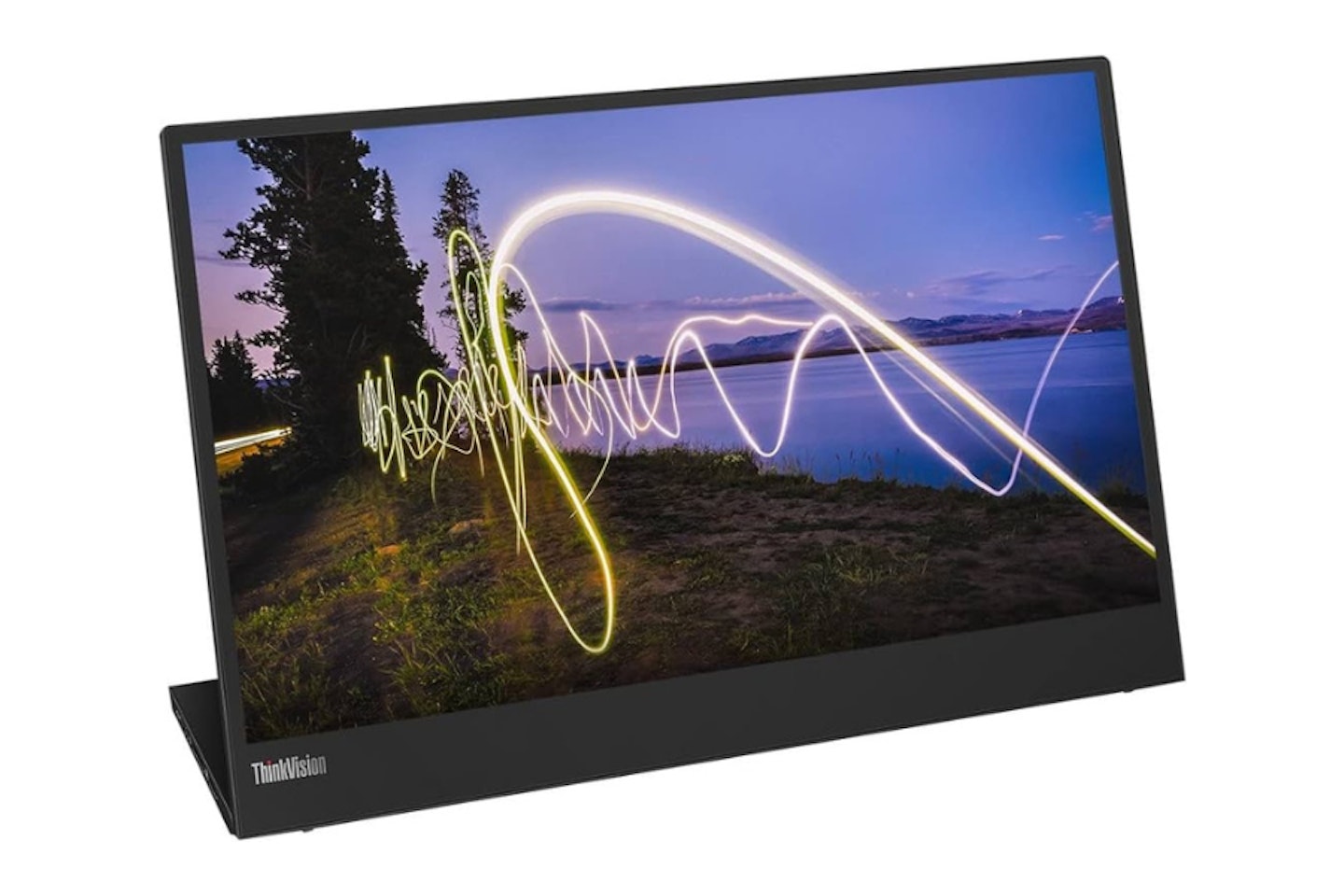 Laptops direct
Laptops directwww.laptopsdirect.co.uk
The Lenovo ThinkVision M15 is a lightweight and slim 15.6" IPS Full HD USB-C portable monitor designed for easy multitasking and portability. It features two USB Type-C ports with power-pass-through capability, allowing for single adapter charging of both the monitor and a laptop. Equipped with easy tilt and advanced height adjustment, this monitor supports a 6ms response time and a 60Hz refresh rate, making it ideal for spreadsheets, presentations, and on-the-go productivity.
Pros
- Lightweight
- USB-C capable
- 60Hz
- Clever height adjustment
Cons
- Average screen brightness
| Display size: | 15.6" IPS |
| Resolution: | Full HD (1920x1080) |
| Contrast Ratio: | 700:1 |
| Refresh Rate: | 60Hz |
| Brightness: | 250 cd/m² |
| Connectivity: | USB-C |
| Weight: | 0.860kg |
| Dimensions: | 35.76 x 22.544 x 0.59 cm |
Best laptop-mounted
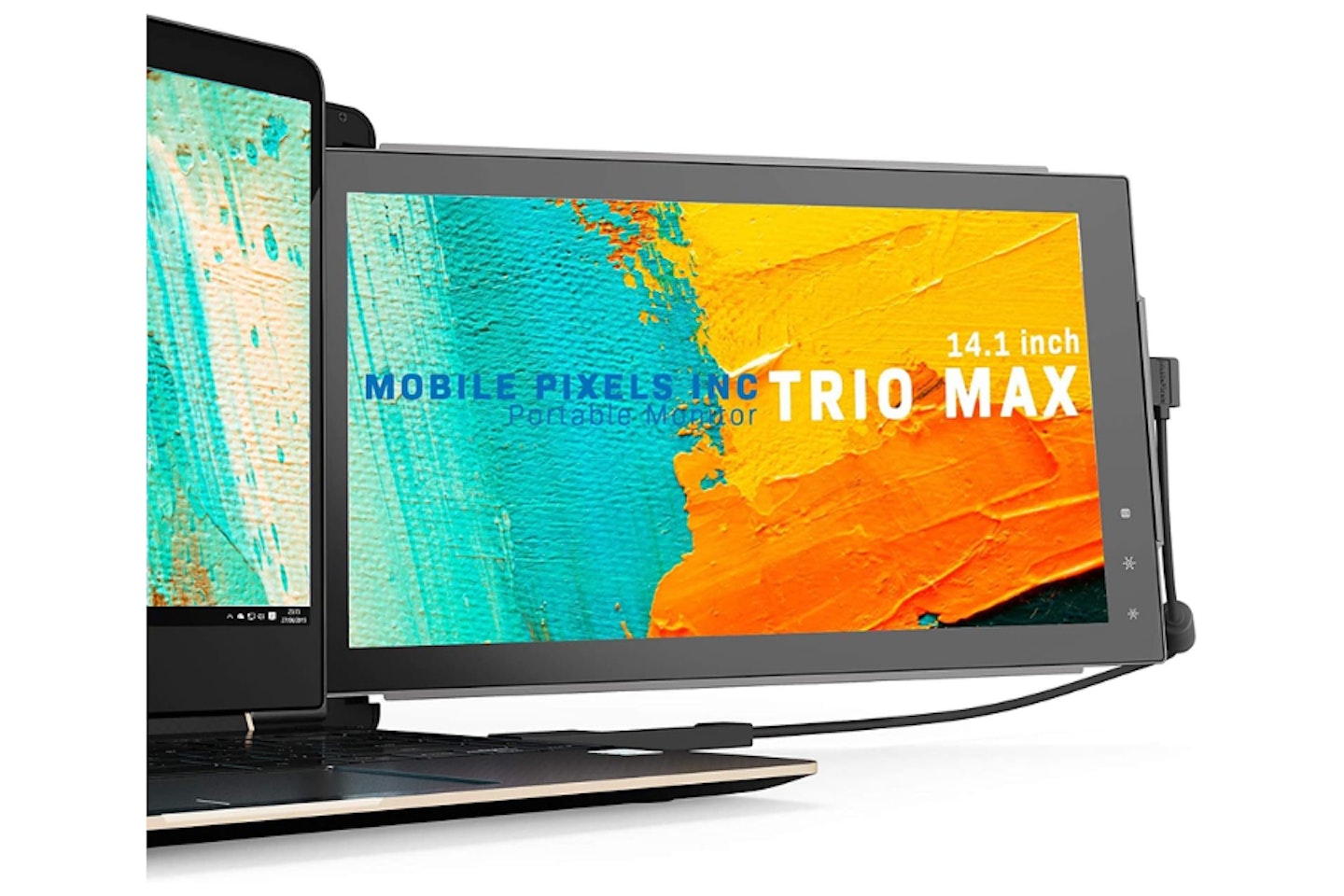
www.laptopsdirect.co.uk
With its clever laptop attachment, the little Trio Max screen from Mobile Pixels is ultra-portable and has astonishingly impressive specs. It has one of the smallest screen sizes here, but it outshines most of the competition for brightness and a contrast ratio that's the same as the gaming screen. And speaking of gaming - this new model supports the Nintendo Switch. The screen kickstand is clever because it allows you to attach the monitor to your laptop without putting any actual strain on the laptop itself. It has a full 270-degree rotation which means the screen can be swung around to the other side of the laptop screen - ideal for meetings and presentations.
Even better, and hence the name of the product, using USB-C means two of these can be attached on either side of your laptop screen - for three-monitor perfection.
Pros
- Innovative kickstand
- Designed to work together in pairs for a three-screen setup
- Eye care mode
- Touch-sensitive menu
- Lightweight
- 270° Flexible Viewing Angle
- Beautiful metallic brushed casing
Cons
- Some find it too heavy depending on the sturdiness of their laptop, so check the weight.
- Not the brightest here
| Display size: | 14” w/IPS |
| Resolution: | FHD 1920 x 1080 |
| Contrast Ratio: | 1000:1 |
| Response Time: | 17ms |
| Refresh Rate: | 60Hz |
| Brightness: | 166 cd/m² |
| Connectivity: | USB C, USB A |
| Weight: | 934.4 Grams |
| Dimensions: | 35.56 x 1.27 x 24.13 cm |
Best 4K portable
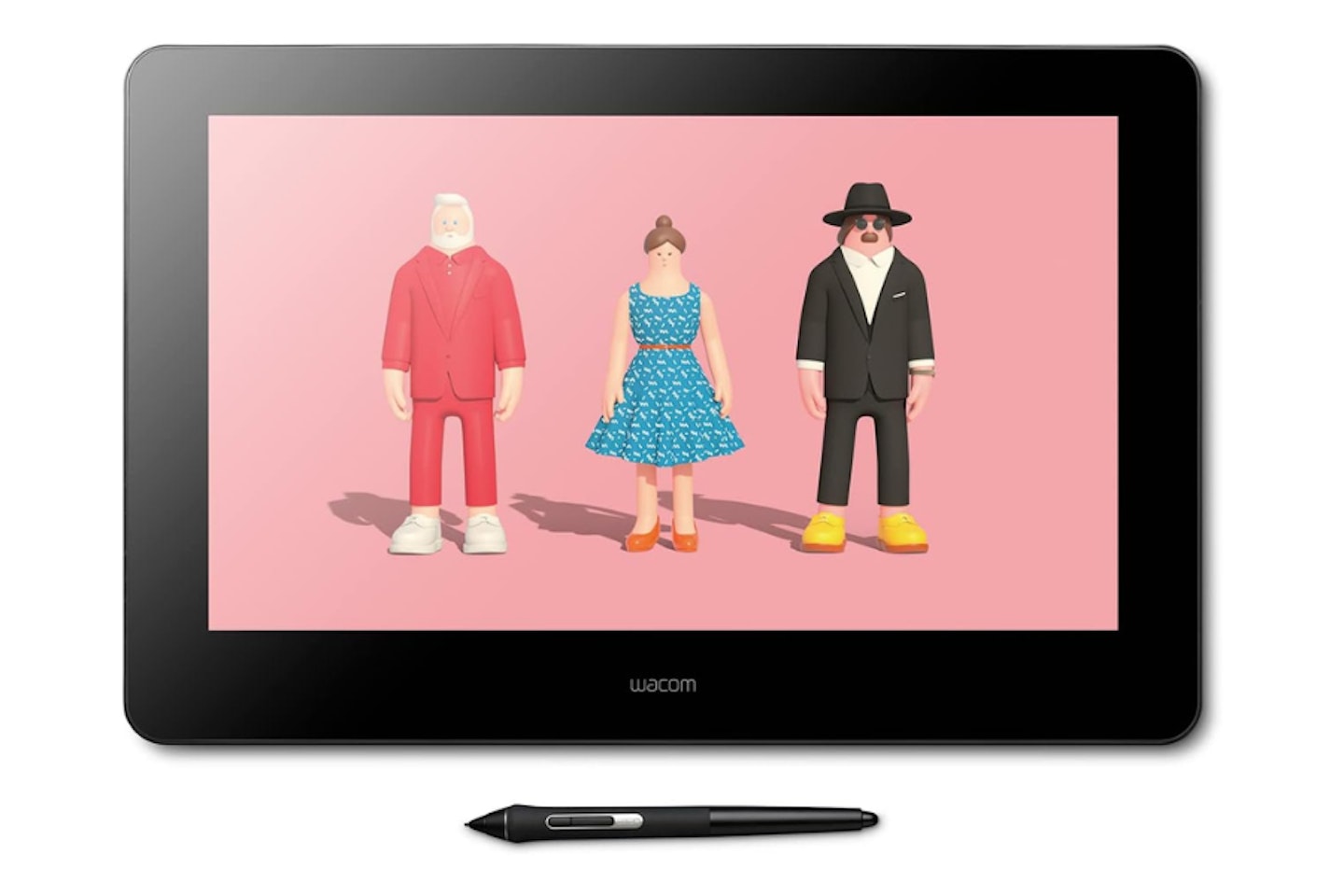
The only monitor here that comes with a pen, this screen means business. Paired with Wacom's Pro Pen 2, you can get super precise with your work. It only requires a light pressure force for activation, and thanks to the screen's 8,000+ pressure points, it feels exactly like using a regular pen. The Pro Pen 2 is battery-free and draws power directly from the screen using electro-magnetic resonance.
Even better - this is the only 4K screen here, plus it's also the only one that has a fantastic 98% Adobe RGB colour space. So, if you're a creative on the move (or even at your desk) this is a must-have.
Pros
- Amazing drawing precision
- Brilliant pen design
- Wacom build and reliability
- 4K
- 98% Adobe RGB capable
- An indispensable tool for creatives no matter where they are working from
- Vesa mount for included stand
- Anti-glare etched glass
Cons
- Somewhat dated design
| Display: | 15.6", IPS |
| Resolution: | 4K (3840 x 2160) |
| Contrast Ratio: | 1000:1 |
| Response Time: | 30ms |
| Refresh Rate: | not stated |
| Brightness: | 300 cd/m2 |
| Connectivity: | USB C / HDMI |
| Weight: | 3.68 kg |
| Dimensions: | 410 x 266 x 22 mm |
Best high-resolution
As you'll have seen from the others on this list, or from scouring the web, 4K portable monitors are a true rarity. The next best thing is this - the LG +View monitor. It's a great size, sporting a 16-inch screen, and looks professional and refined too. It's USB-C, so you can benefit from a simple laptop setup in terms of power. There's an auto-rotate function which is super-handy for documents and the like. An added bonus for anyone who likes to watch movies or design things is the aforementioned resolution. It's WZQGA (2560 x 1600) and even is DCI-P3 compliant for a wide colour gamut.
Lastly, if you are lugging this around, you probably won't notice - it's less than 700 grams. With the useful folio cover that goes up to just over 900g - but that's worth it for the extra peace of mind. A stunning screen, especially for the money.
Pros
- Excellent high-resolution
- P3 colour space
- Very light for the size and spec
- USB-C
- Folio cover excellent quality and design
- Good contrast and brightness
- Thin bezel
Cons
- Not much to nitpick for the spec and price
| Display: | 16", IPS |
| Resolution: | WQXGA (2560 x 1600) |
| Contrast Ratio: | 1,159:1 |
| Response Time: | 5 Milliseconds |
| Refresh Rate: | 60hz |
| Brightness: | 342cd/m² |
| Connectivity: | USB Type-C Thunderbolt connection |
| Weight: | 670g (990g with Folio Cover) |
| Dimensions: | 0.8D x 36W x 24.6H centimetres |
Best portable monitors: Buyer's guide
Having dual screens is well known to improve workflow and productivity, with some studies touting a 30 per cent or more productivity boost with two screens rather than one. It makes sense. Working with two screens makes it easier to flick between pages and therefore concentrate for longer. The benefit of adding a small portable screen, even alongside a 27-inch monitor on a desktop for when you're working from home, can be substantial.
The best portable monitors are also very useful companions to business people who frequently give presentations to small groups. Having your visuals on an additional screen for your audience to look at makes meetings and presentations much easier, and more interactive.
What size should I get?
A lot of people like to match the portable monitor size to the screen size of their laptop. You can do this if you wish, but if you want increased screen real estate, get a larger one. Just bear in mind, the larger the screen, the less portable it becomes.
Auto-rotation might seem like an important feature, but in truth, it isn’t essential because you can adjust the screen rotation yourself through Windows screen settings, for example.
What specs are important?
Resolution: For general use for working and studying, a 1080p Full HD screen with a quick response rate (five or 10 milliseconds) will be ideal. For gamers and designers, sharp colours and performance are also crucial, delivered through impressive contrast ratios, flicker-free viewing, and a fast refresh rate (60HZ is good).
It’s generally a good idea to match the resolution of the portable monitor to that of your laptop screen. This will almost happen naturally anyway since we tend to use either 1080p Full HD or UHD 4K anyway.
Audio: Audio quality is not something that should be considered heavily. If you want sound quality, you will have your own wireless headphones. But, don't forget that a portable monitor isn't a tablet - it may have a similar feel, even if it's a touchscreen - but think of them more like a more mobile extension of your desktop. For that reason, unless it'll be annoying for others on public transport, you could even plump for some decent portable speakers.
Panel type: It is worth noting that portable monitors don’t have the maximum screen brightness that you would see elsewhere - even on many budget PC screens. Portable LCD technology is energy-efficient but at a slight tradeoff for maximum brightness. The brightness of portable monitors is generally fine for anything except for outdoor use. Mobile gamers or movie fans will want to keep a special eye on the LCD panel type though. IPS and VA are best for colour, contrast and motion. Other panel technologies exist that will deliver better contrast and colour accuracy, such as OLED, but due to the power needed, you're unlikely to find that in a truly portable screen.
Battery life: Yes, avoiding that dreaded moment when you're away from the mains and the screen dies is paramount. Check the specs for the stated number of operational hours, take them with a little pinch of salt, and you'll be able to choose wisely.
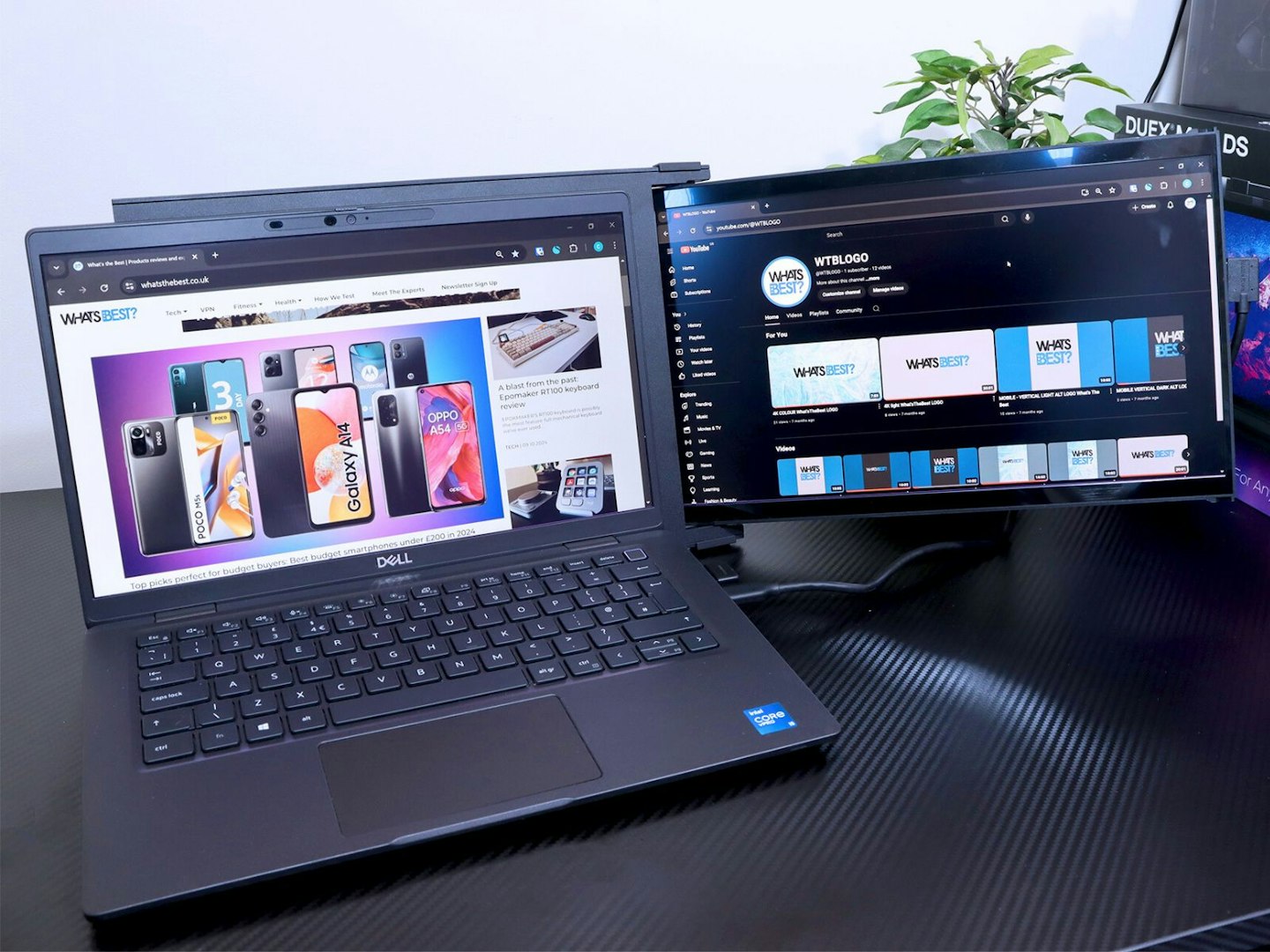
Portable monitors: Frequently asked questions
Are portable monitors worth it?
For most people, the best portable monitors are a great investment. At the very least they will make your mobile computing setup look cool, at the most you'll really see the benefits of having some extra screen real estate to work with. Read email on your laptop screen - type a document on the portable screen. Review your photographs on one - edit them on the other. The list is endless.
Are portable monitors good for work?
As we touched on above, the enhanced workflow can lead to better productivity across the board. It's just faster and easier to navigate your way between applications with a portable monitor by your side.
What's the best portable monitor for colour accuracy?
Most users who care about colour accuracy are likely to be designers and creatives. Also, movie and TV streamers may be interested in the extra colour palette provided by HDR (High Dynamic Range) screens. In general, look for the best portable monitors that are calibrated and verified by industry leaders like Pantone or Calman. And also a high percentage of accuracy for colour gamuts preferred by creatives - such as sRGB, P3 and Adobe RGB. All that said, it can be hard to find all or some of those features on a portable monitor as they're both costly and power-hungry.
Do portable monitors work with any laptop?
It depends. If your laptop is getting on a bit, it may not even have a digital video connection like HDMI. Each connection type supports various resolutions too. So, it's important to match the ports on the laptop with those on the portable screen. The best current technology is probably USB-C, as this can handle power, sound and video in one compact cable. If your laptop has this type of port, you'll have no trouble finding a portable monitor to match.
Why should you trust us?
At What’s The Best, our mission is to provide accurate and reliable reviews, ensuring our readers receive honest and transparent information about the best technology products available. Anything less would undermine our commitment to being a trusted source of unbiased product information.
Our dedicated in-house writing team comprises experts with extensive experience and a genuine passion for technology. Collectively, we have spent decades testing and writing about tech, leveraging our expertise in all our articles, advice pieces and reviews.
We maintain complete editorial independence and do not accept payment for product reviews. Our writers have full control over their content, ensuring that products are selected based solely on the needs of our readers. While we may earn commissions or other compensation from links on our website, this never affects our product choices. These links enable us to continue offering valuable consumer advice, without compromising the integrity of our reviews.
Chris Williams is a contributor for What's The Best. He also writes for CAR and Parkers.
Subscribe to the What’s The Best Newsletter to keep up to date with more of the latest reviews and recommendations from the What’s The Best team.
